For many French people, the French Riviera (or Côte d’Azur) is synonymous with summer holidays.
Between mountains and the sea, the French Riviera offers a stunning variety of landscapes and colours, from beaches and secretive bays to promontories.
The seashore is lined with cluster pines, palm trees, and Mediterranean maquis.
Let’s have a closer look at this amazing place, which is today part of the Provence-Alpes-Côte d’Azur region.
Plan your trip to the French Riviera!
- 🏨 Find the best accommodations in the French Riviera on Booking.com
- 🙋♀️ Get the PASS CÔTE D’AZUR and take your pick from more than 100 amazing experiences!
- 🛥 Take a sea trip from Nice to Monaco on a 2.5 hours boat excursion
- 🚌 Board a double-decker bus for a Day Trip from Nice to the French Riviera (Cannes, Monaco, Eze)
- 💐 Take a guided tour + perfume making workshop at the Fragonard Factory in Grasse
- 🥗 Experience the culture and food of Old Nice on a 4-hour sightseeing and tasting tour
- 🍷 Enjoy a full-day tour of the Côtes de Provence wine region with an expert guide and visit 3 award-winning wineries and taste a variety of fine wines
- 📚 Read the DK Eyewitness Provence and the Côte d’Azur Travel Guide
- 🤩 Get familiar with these hotspots of the Côte d’Azur
- 👨🎓 Learn French in the South of France
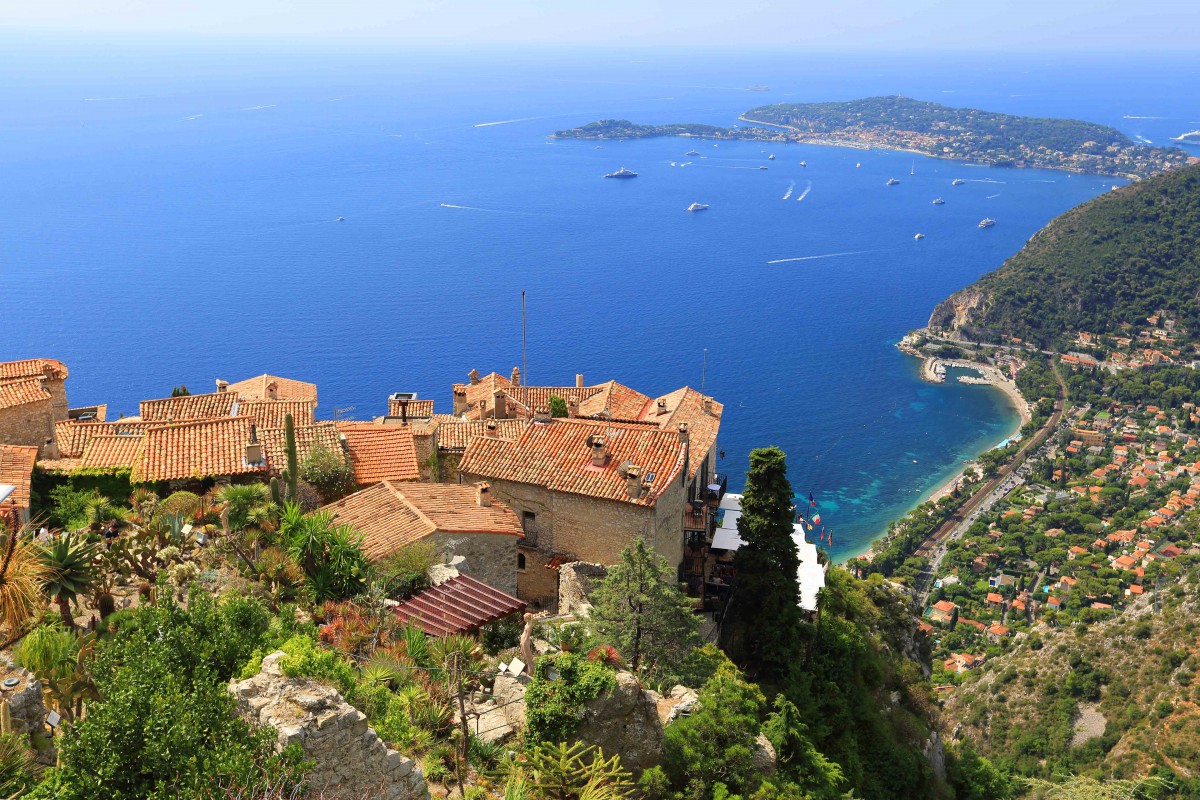
What is the French Riviera?
The French Riviera – or Côte d’Azur in French – is a coast that stretches from the east of Marseille to the Italian border at Menton.
As we’ll see below, the western limits of the French Riviera are quite disputable. Some will make it start from Marseille, and others from La Ciotat or east of Toulon.
Despite this uncertainty, the French Riviera corresponds to the Provençal coastline of the Mediterranean Sea.
It includes cities, harbour towns and resorts such as Toulon, Hyères, Bormes-les-Mimosas, Le Lavandou, Saint-Tropez, Sainte-Maxime, Fréjus, Saint-Raphaël, Cannes, Antibes, Nice, Monaco and Menton.
![Baie de Cannes © fr.zil - licence [CC BY-SA 2.0] from Wikimedia Commons](https://frenchmoments.eu/wp-content/uploads/2016/01/Baie-de-Cannes-©-fr.zil-licence-CC-BY-SA-2.0-from-Wikimedia-Commons.jpg)
Where does the name Côte d’Azur come from?
Few people know it, but the name Côte d’Azur is quite recent.
The expression only dates from the end of the 19th century.
It was coined by the writer Stéphen Liégeard (1830-1925), a native of Dijon. This former lawyer, sub-prefect and then deputy under the Second Empire, devoted himself to literature during his retirement.
Liégeard had a villa in Cannes where he spent the winter. It was there, overlooking the deep blue Mediterranean Sea, that he came up with the idea of creating the name “Côte d’Azur”.
The Burgundy department he came from was called the “Côte d’Or” (Gold Coast). He was inspired by this and substituted “Or” with the heraldic term “Azur” which means “of blue colour”.
He mentioned the expression he had coined in his book La Côte d’Azur in 1887.
It was the very first time the term was used. A successful expression was born… that would become world-famous.
In fact, as early as 1894, Stéphen Liégeard observed that “the dictionary has grown by one word”.
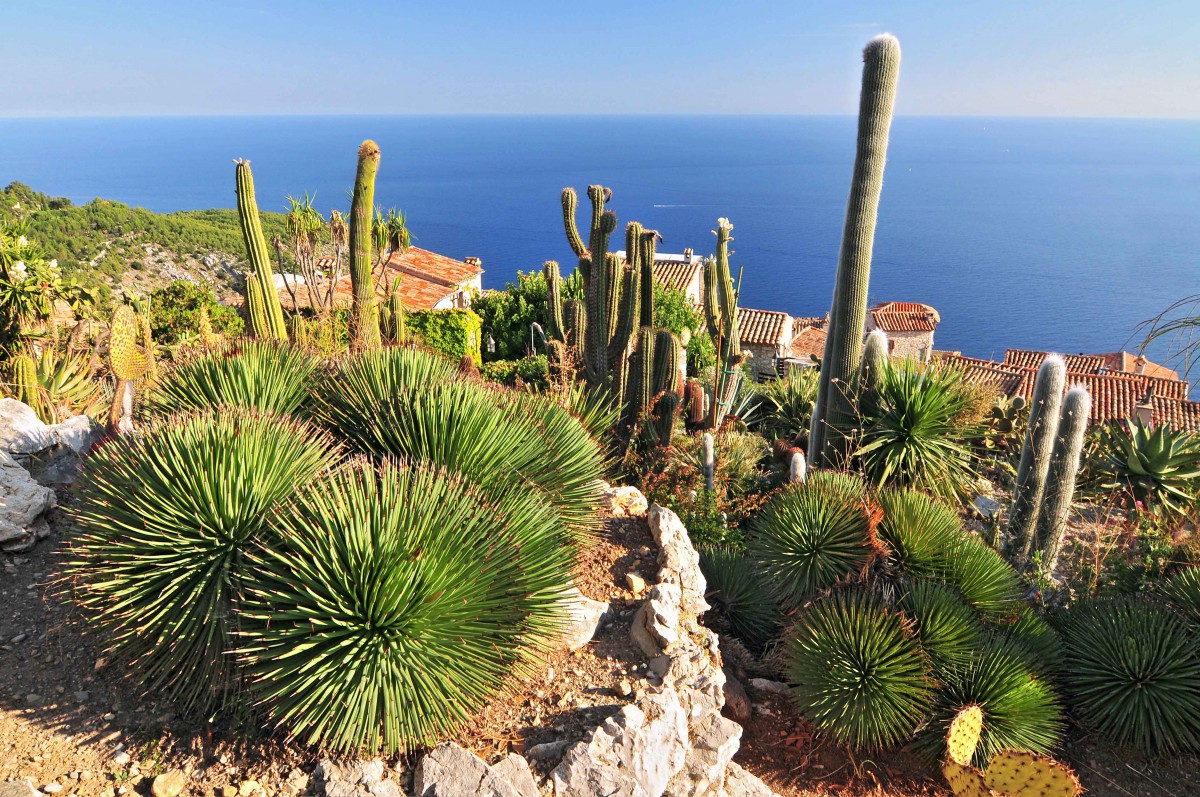
But then what was the region called before?
It seems that at the beginning of the 20th century, another expression existed: la Rivière de Nice.
However, it is likely that this one corresponded to an area between Cannes and Menton, and did not go further west.
The Var coast is geographically and historically part of Provence. It is, therefore, possible that we used to speak of the Côte provençale (Provençal coast), or even the Côte varoise (Var coast, after the creation of the département during the Revolution).
![Cours Saleya. Nice © Qjafcc - licence [CC BY-SA 3.0] from Wikimedia Commons.jpg](https://frenchmoments.eu/wp-content/uploads/2019/06/Cours-Saleya-Nice-©-Qjafcc-licence-CC-BY-SA-3.0-from-Wikimedia-Commons.jpg.jpg)
The western limits of the Côte d’Azur in dispute!
To make things a little more complicated, the boundaries of the Côte d’Azur are subject to dispute.
Since the term is of literary origin and does not correspond to an administrative name, the Côte d’Azur does not have a clear and indisputable delimitation.
Let us remember that Stéphen Liégeard created it to illustrate his book, a sort of ancestor to today’s tourist guides.
Liégeard had described the Provencal and Genoese coastline from Marseille, including Toulon and Hyères.
As a result, the boundaries of the Côte d’Azur are rather blurred on the western side.
![Toulon from Mount Faron © David.Monniaux - licence [CC BY-SA 3.0] from Wikimedia Commons](https://frenchmoments.eu/wp-content/uploads/2021/01/Toulon-from-Mount-Faron-LR-copyright-David.Monniaux-licence-CC-BY-SA-3.0-from-Wikimedia-Commons.jpg)
Nowadays, these are not the same for everyone.
- Like many authors, the Michelin Green Guide starts the Côte d’Azur at Saint-Cyr-sur-Mer, the first commune of the Var on the border of the Bouches-du-Rhône (the département of Marseille).
- Others prefer a starting point in Hyères, leaving out Toulon.
- Better still, the tourist office of the Alpes Maritimes département appropriates the Côte d’Azur on its territory’s coast!
- It seems that Marseille is no longer part of it for the vast majority of tourist guides. This can be explained by the enormous tourist potential of France’s 3rd largest city, which can afford to be free of the tourist label.
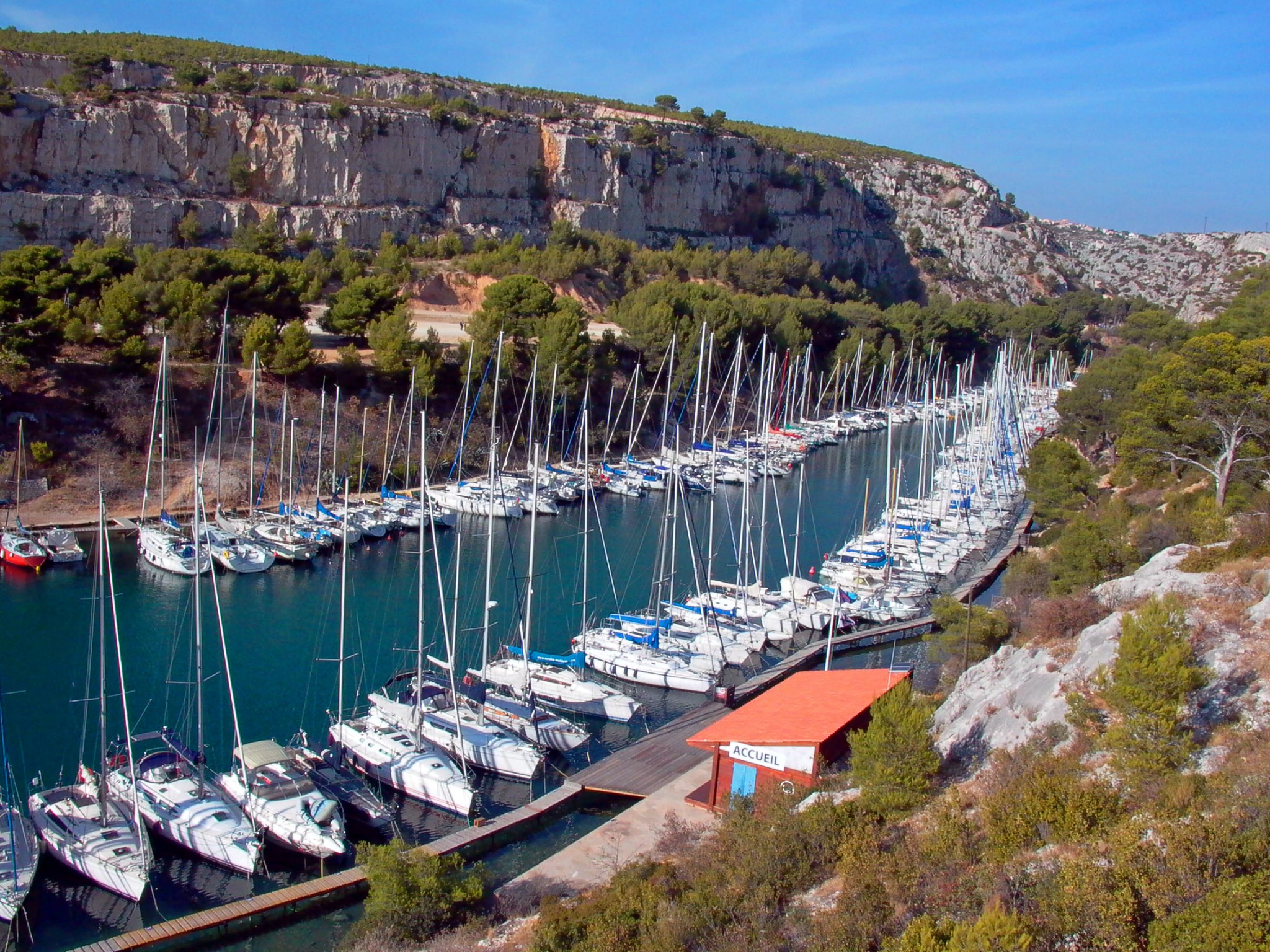
What is the difference between the Côte d’Azur and the French Riviera?
In general, the Côte d’Azur corresponds to the English term French Riviera.
Riviera is an Italian word derived from the Genoese, meaning “a region characterised by the rough contact of sea and mountain“.
It was first used to refer to the area around Genoa before being extended to the entire Ligurian coast.
English speakers thus distinguish the French Riviera from the Italian Riviera (from Ventimiglia to Genoa).
In French, the Riviera française corresponds to the coastline of the Alpes Maritimes département, in particular from Nice to the Italian border at Menton.
The term Riviera (or la Riviera in French) is generally used to refer to the coastal region of the Mediterranean Sea from the Côte d’Azur in France to beyond La Spezia in Italy.
Confusing, isn’t it?
Other rivieras in the world
From the end of the 20th century onwards, the vogue for seaside or lakeside resorts gave the name riviera its tourist tone to the point that it was subsequently used to designate other suitable shores.
Some examples:
- Lake Garda Riviera (Italy)
- English Riviera (Torbay, Devon)
- Swiss Riviera (from Lausanne to Montreux)
- Riviera des Alpes (Aix-les-Bains)
- California Riviera (Santa Barbara)
- Florida Riviera (Miami Beach)
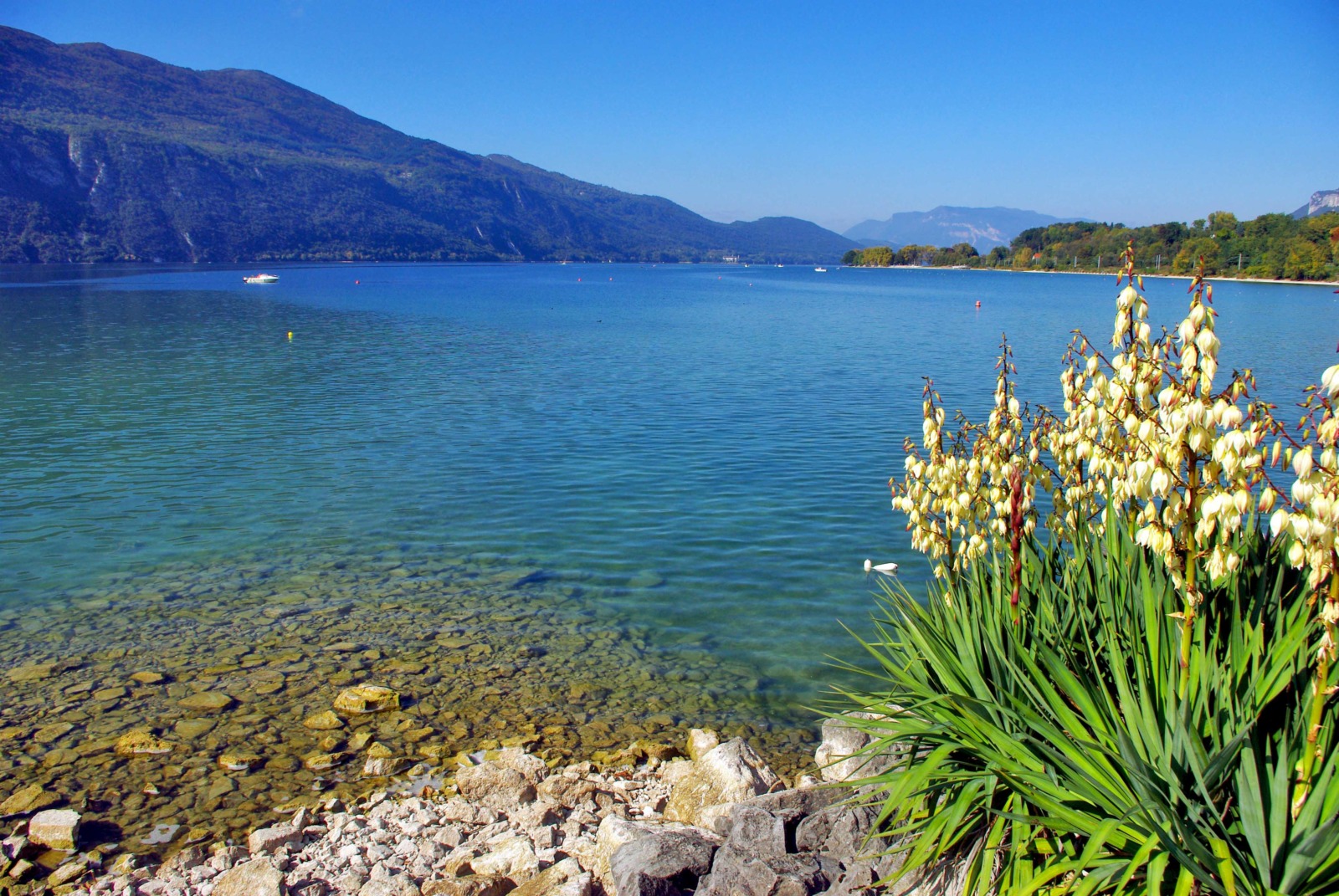
Where to stay on the French Riviera?
If you wish to visit the French Riviera, it is important to choose the location of your base carefully, so as not to travel unnecessary distances each day. After all, the coastline stretches over several hundred kilometres…
As you can guess, the accommodation possibilities on the Côte d’Azur are very vast.
There is bound to be an accommodation for every desire:
- Are you looking for a palace with a view of the sea?
- A charming bed and breakfast in the heart of a hilltop village?
- A villa surrounded by greenery?
- A comfortable campsite?
- Or one of the most unusual accommodations?
Find your accommodation here or browse the map below:
When to come to the French Riviera?
Just one piece of advice: anticipate and book well in advance if you want to come in summer.
The Côte d’Azur is one of the most popular tourist regions in Europe during the school holidays. The beaches are extremely busy in July and August and availability is quickly taken up. It is not uncommon to run out of reasonably priced accommodation for the summer as soon as the Easter holidays end.
![French Riviera - Beach in Nice © Dennis Jarvis - licence [CC BY-SA 2.0] from Wikimedia Commons](https://frenchmoments.eu/wp-content/uploads/2021/05/Nice-Beach-©-Dennis-Jarvis-licence-CC-BY-SA-2.0-from-Wikimedia-Commons.jpg)
When to book and leave for the Côte d’Azur at the best price?
Book your accommodation up to a year in advance and into the winter.
You can also look out for the “first minute” offers available each year (usually in winter) from specialist websites or major travel agents.
Before confirming your arrival in the French Riviera, take note of the big events that bring in a lot of people. For example :
- the Cannes Film Festival
- the Monaco Formula 1 Grand Prix
- the Nice carnival
- the Menton lemon festival, etc.
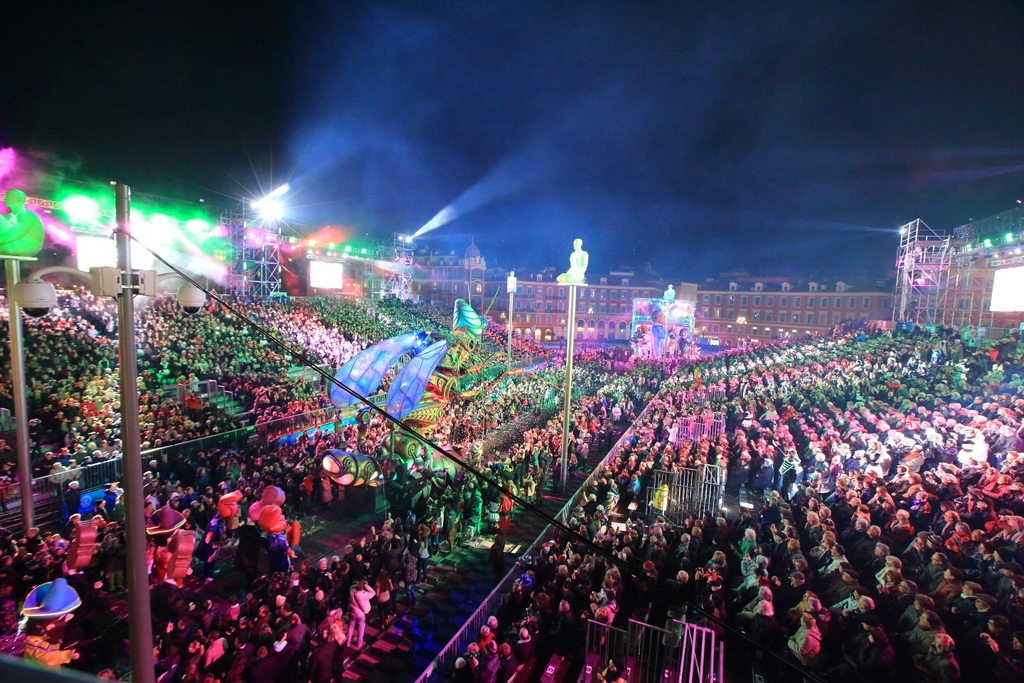
The best times of the year to visit the French Riviera
Let’s avoid the summer and the periods of big events.
Before or after the summer
Going in May-June or September-October is a good plan. There are fewer visitors, and the prices are more affordable.
Try to avoid the last week of June or the first week of September, which are still quite expensive. You will find that prices are close to the height of summer (especially at the last minute).
During the Easter or All Saints’ holidays
The weather is usually very nice at this time of year. Prices are often divided by 2 or 3 compared to summer.
A weekend excursion all year round
The Côte d’Azur also lends itself to winter or mid-season city trips, as well as short wellness or thalassotherapy stays.
Good deals for a weekend trip on the Côte d’Azur are easy to find. There are many luxury hotels and many promotions in the low season (apart from major events of course!).
Good to know: this is when the 5-star and 4-star hotels have a strong capacity to break the prices in destocking.
![French Riviera - Hôtel Negresco, Nice © Miniwark - licence [CC BY-SA 3.0] from Wikimedia Commons](https://frenchmoments.eu/wp-content/uploads/2021/05/Hôtel-Negresco-©-Miniwark-licence-CC-BY-SA-3.0-from-Wikimedia-Commons.jpg)
What makes the French Riviera so popular?
The French Riviera has been a tourist hotspot at least since the 19th century.
The European elite on vacation
For almost 200 years, the English created a real parallel society on the French Riviera, and in particular on the coast of the Alpes Maritimes department.
Indeed, Queen Victoria and her son Edward VII were truly under the region’s spell.
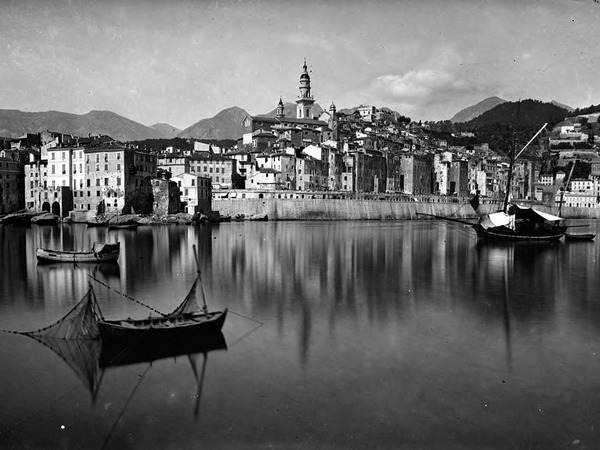
In their wake, hundreds of British families came to settle in Nice. This explains the presence of an Anglican church.
In addition, English doctors recommended that their patients stay in Menton, famous for its climate, to treat the slightest ailment.
The English were not the only ones. The Côte d’Azur was also a favourite holiday destination for several generations of wealthy Americans and Europeans, especially Russians.
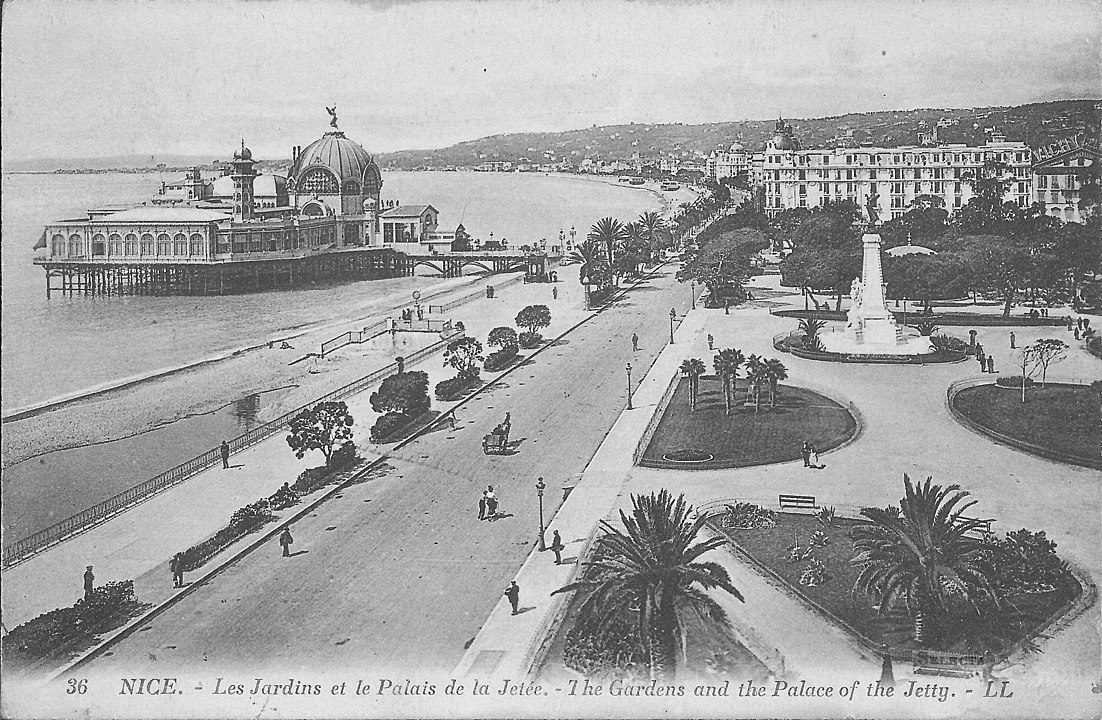
Later, in the first half of the 20th century, many artists and writers frequented the Côte d’Azur, including Pablo Picasso, Henri Matisse, Edith Wharton, Somerset Maugham and Aldous Huxley.
It is said that the Côte d’Azur is a part of Provence that has turned towards Italy.
Indeed, the French Riviera is a land of contrast. Snow-capped peaks can be seen from the many warm beaches.
The beaches
The sandy beaches of the Côte d’Azur have made the Mediterranean coastline famous. From Antibes to Menton, they have the particularity of being pebble beaches. In fact, the most prestigious seaside resorts are located in this part of the French Riviera: Nice, Villefranche-sur-Mer, Beaulieu-sur-Mer, Monaco…
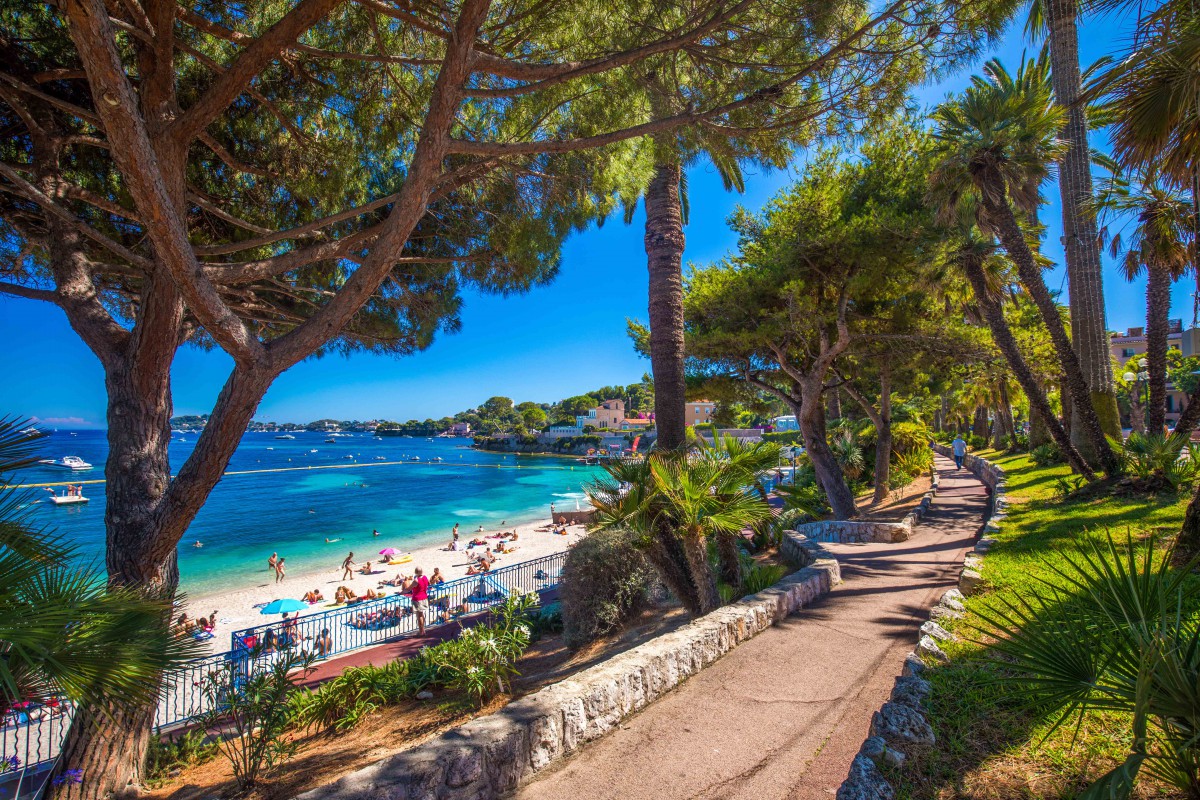
However, all along the coastline, you’ll find crowded popular beaches, secluded coves or exclusive clubs.
From busy cities to the quiet hinterland
The most important cities are concentrated on the coast: Toulon, Fréjus, Cannes, Antibes, Nice, Monaco and Menton.
Unfortunately, the coastline is now occupied by a large number of buildings. And the influx of tourists in the summer does not allow you to observe the local life as you would like.
If this is really what you are looking for, you will have to come outside the summer or prefer exploring the hinterland.
In the interior of the Var département, hills covered with garrigue alternate with limestone plateaus. In this protected natural landscape there are many Provençal villages yet to discover. These are made up of old Romanesque churches, wrought-iron bell towers and shady squares with a refreshing fountain.
![Tourtour © Greteck - licence [CC BY-SA 3.0] from Wikimedia Commons](https://frenchmoments.eu/wp-content/uploads/2021/05/Tourtour-©-Greteck-licence-CC-BY-SA-3.0-from-Wikimedia-Commons.jpg)
The hinterland of Nice extends over the Pre-Alps, whose highest peaks reach 2,000 metres in altitude. This is the land of perched villages nestled on the edge of impressive peaks. These old villages, sometimes deserted, have a resolutely Italian air with their baroque churches (Peille, Peillon, Lucéram, Sainte-Agnès…).
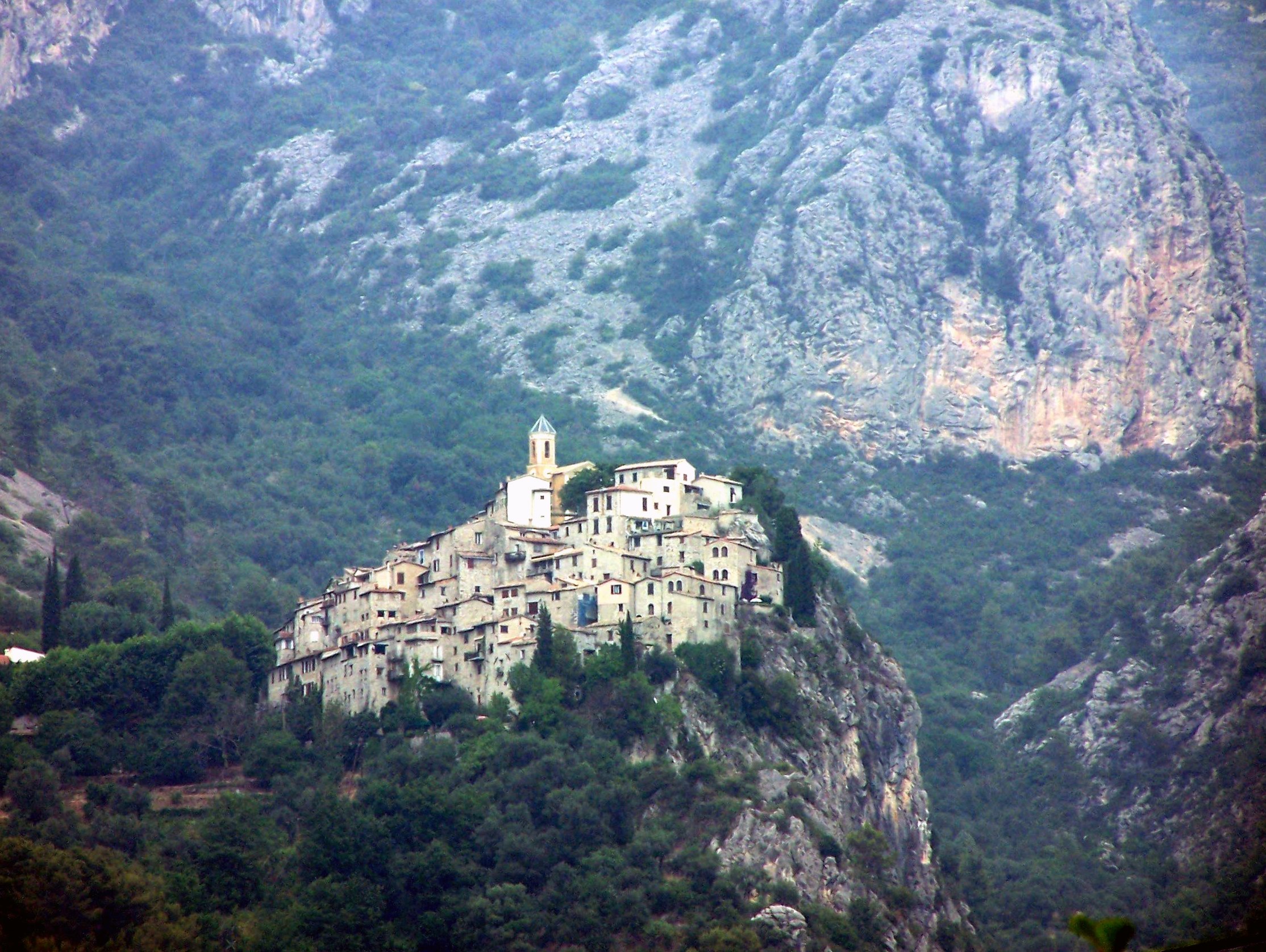
The great Maritime Alps, which form the southeastern border of France flow dramatically into the Mediterranean sea between Nice and Menton.
A blessed climate
The French Riviera is remarkable for the mildness of its climate: exceptionally long periods of sunshine (more than 300 days per year), heavy but very short rains, and generally mild winters.
Good weather and warmth have made this region the most important holiday area in France. Thus, from June onwards, millions of holidaymakers come to seek the sun on the kilometres of beaches.
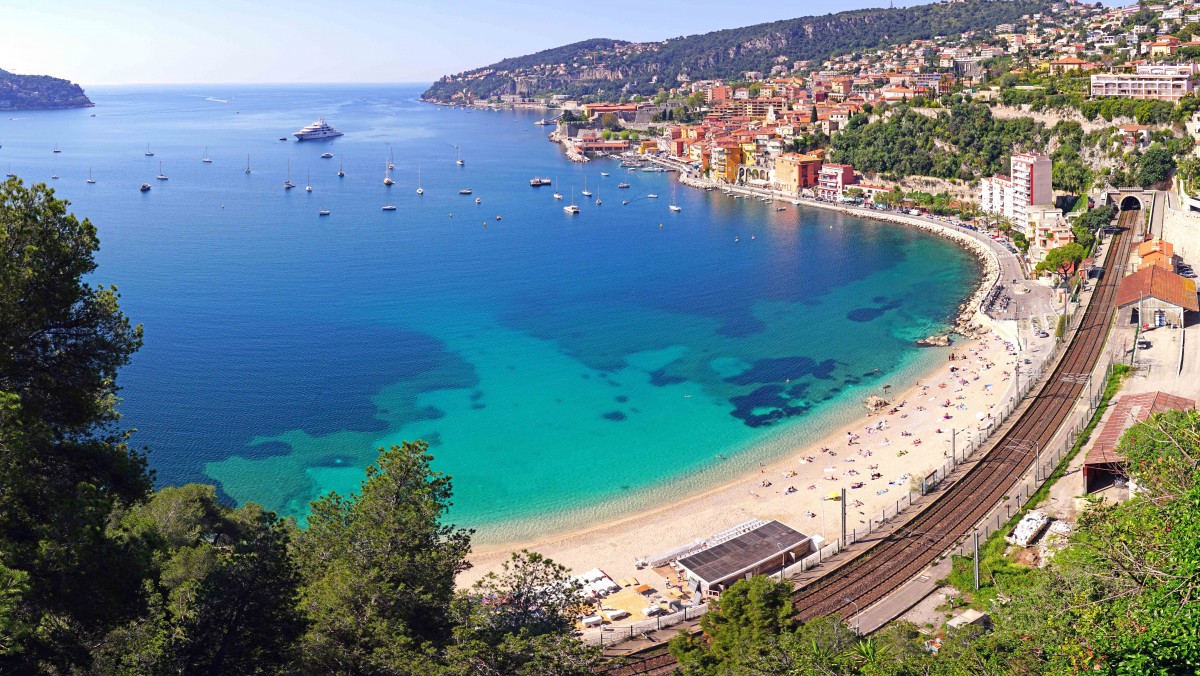
Flower Power!
On the magnificent Côte d’Azur, the warm, sunny climate is ideal for the growing of flowers, olives and citrus fruits.

These plants and flowers bring a little bit of the sunshine of the Mediterranean regions to the whole of France:
- the mimosa in flower in the middle of winter,
- the fragrant lavender in the linen cupboards,
- the thyme, the laurel, the fennel and the rosemary which perfume the kitchen.

What to see on the French Riviera
I’ll be frank with you: I won’t be able to give you a list of all the things to see on the French Riviera.
For that, you would have to create an encyclopaedia because there is so much to discover.
If you are not familiar with this particular region of Provence, then there are some unmissable sites that you should visit.
Here is a shortlist of 10 must-see sites to arouse your curiosity.
1. The islands of Hyères
The islands of Hyères (or îles d’Or) close the bay of Hyères to the south. These famous islands are among the most beautiful in the Mediterranean.
The westernmost is the island of Porquerolles. It is also the largest, 7 km long and 3 km wide.
![Porquerolles © Gasti from France - licence [CC BY-SA 2.0] from Wikimedia Commons](https://frenchmoments.eu/wp-content/uploads/2021/05/Porquerolles-©-Gasti-from-France-licence-CC-BY-SA-2.0-from-Wikimedia-Commons.jpg)
The island of Port-Cros owes its name to the hollow shape of its small port. The island is classified as a national park. It is a unique reserve of Mediterranean flora and fauna in Europe.
Finally, the third island, Ile du Levant, consists of a rather long (8 km) but narrow (1.2 km) rocky ridge and inaccessible cliffs. The national navy occupies a large part of the island.
2. Saint-Tropez
The small mythical port of Saint-Tropez is located on the southern shore of one of the most beautiful gulfs of the French Riviera.
![Saint-Tropez by Синявский Борис [public domain]](https://frenchmoments.eu/wp-content/uploads/2021/05/Saint-Tropez-by-Синявский-Борис-public-domain.jpg)
Its fame developed from the end of the 19th century. From the 1950s onwards, Saint-Tropez became a favourite with the literary circles of Saint-Germain-des-Prés, and then with the film world. Saint-Tropez is of course associated with Brigitte Bardot, who still lives there today.
The little town is an ideal base for discovering the Presqu’île de Saint-Tropez: its fine sandy beaches and the beautiful village of Ramatuelle.
3. The Estérel massif
Between Saint-Raphaël and La Napoule, the Estérel massif offers a natural setting that is awe-inspiring.
![French Riviera - Côte d'Azur © Frédéric Ducarme - licence [CC BY-SA 3.0] from Wikimedia Commons](https://frenchmoments.eu/wp-content/uploads/2021/05/Agay-from-Dramont-©-Frédéric-Ducarme-licence-CC-BY-SA-3.0-from-Wikimedia-Commons.jpg)
It is one of the most beautiful regions of Provence, that you should discover along the corniche road.
The jagged massif is characterised by its red rocks which seem to be falling into the sea. The fiery red colour of the rocks gives a striking contrast with the deep blue of the sea.
4. Cannes
Cannes is situated on the edge of the Gulf of Napoule, a magnificent harbour with the Esterel Mountains looming behind it. In fact, Cannes owes its success to the beauty of its site, the mildness of its climate and the splendour of the events that take place there, including the famous Cannes Film Festival.
![French Riviera - Cannes © Gilbert Bochenek - licence [CC BY-SA 3.0] from Wikimedia Commons](https://frenchmoments.eu/wp-content/uploads/2021/05/Cannes-©-Gilbert-Bochenek-licence-CC-BY-SA-3.0-from-Wikimedia-Commons.jpg)
Cannes is the Croisette (the seafront) and its old town (Le Suquet). It is also the magnificent Lérins Islands, off the coast of the city.
5. Pays vençois
Between the sea and the pre-Alps, the Pays vençois is made up of gentle hills and flowery valleys. It is a small paradise where vines, orange, lemon and olive trees grow and mingle with roses, carnations, violets and mimosas.
Its small capital, Vence, is a charming winter and summer resort. The picturesque old centre sits on a rocky promontory.
![Vence © Myrabella - licence [CC BY-SA 3.0] from Wikimedia Commons](https://frenchmoments.eu/wp-content/uploads/2021/05/Vence-©-Myrabella-licence-CC-BY-SA-3.0-from-Wikimedia-Commons.jpg)
The countryside around Vence includes several hilltop villages: Tourrettes-sur-Loup, Gourdon, Saint-Jeannet and especially the tourist spot of Saint-Paul-de-Vence.
6. Nice
Nice, the capital of the French Riviera, is a privileged centre of tourism in France.
The Queen of the Riviera is a winter and summer resort located at the end of the magnificent Baie des Anges.
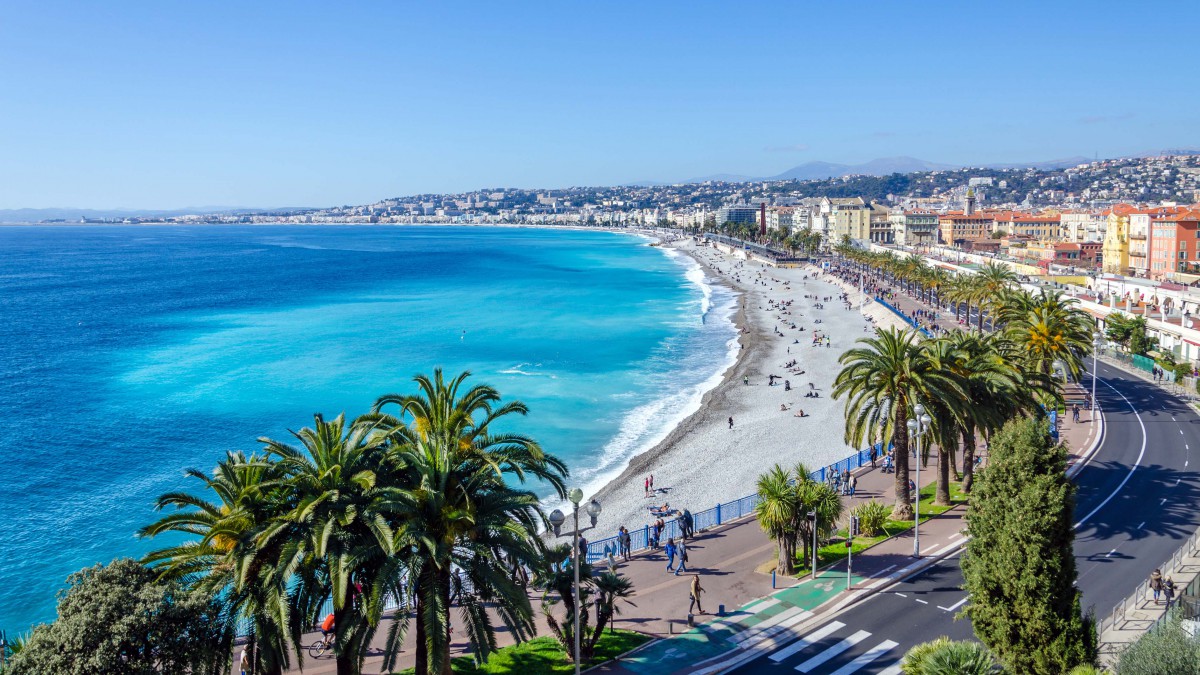
Its success also comes from the charm of its site, its mild climate, and its artistic treasures.
The old town (Vieux-Nice) is a must-see with its winding lanes and stairways at the foot of the castle hill.
The famous Promenade des Anglais is a wide and beautiful avenue that runs along the sea and offers sublime views of the Bay of Angels. Many interesting buildings line it: the Ruhl casino, the Meridien hotel, the Palais de la Méditerranée, the Masséna museum and the Negresco, a jewel of the Belle Epoque.
7. The hinterland of Nice
The hinterland of Nice is essentially mountainous and crisscrossed by winding roads. Far from the glamour of the French Riviera, the country is full of picturesque and contrasting sites that are excellent destinations for excursions.
The hinterland of Nice is endowed here and there with villages perched above wild gorges. They can be recognised from afar by their baroque churches. Examples are Contes, Lucéram, Peille, Peillon and Utelle.
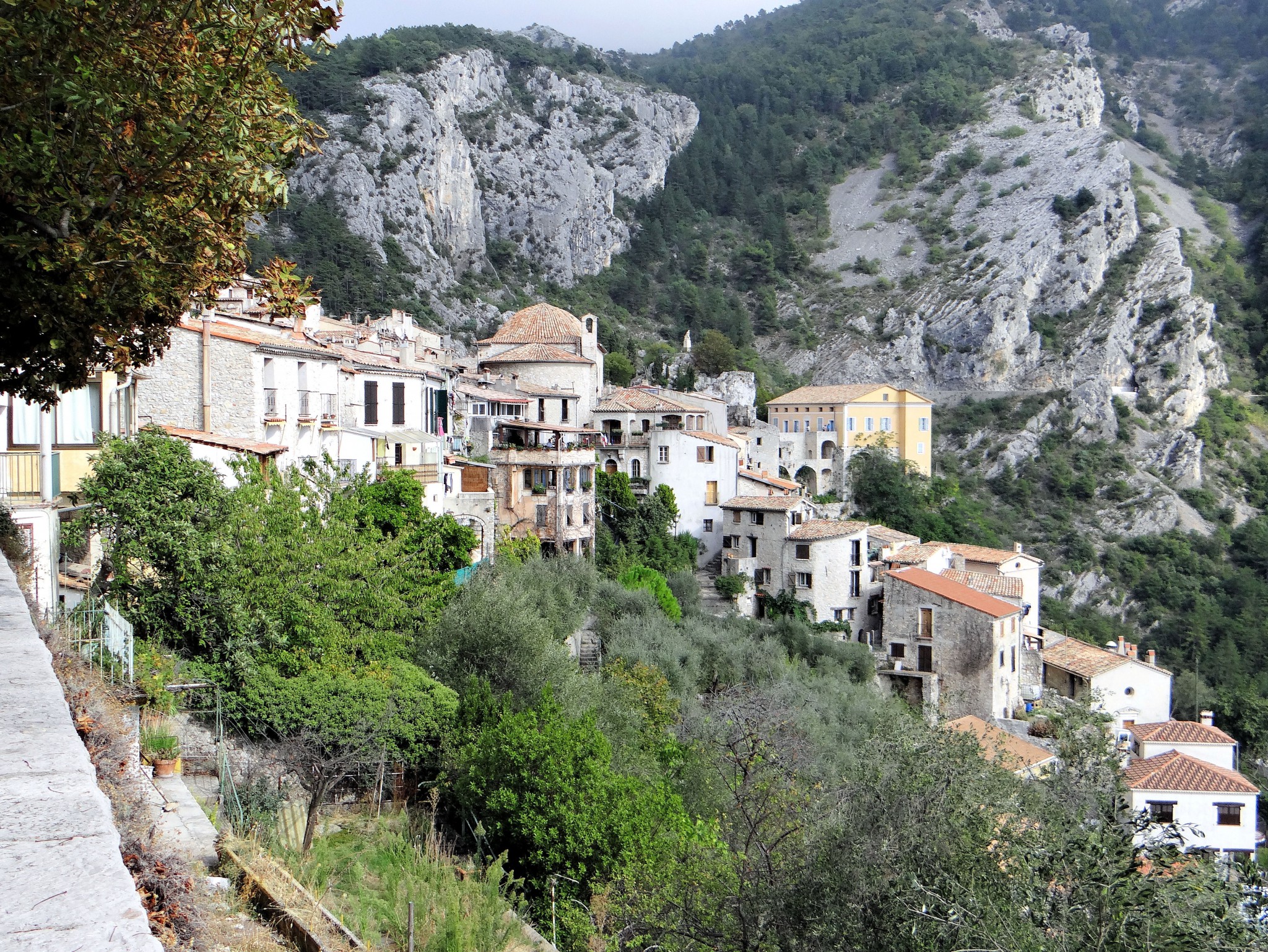
Further north, the Alps display their majesty with peaks exceeding 3,000 metres/ 9,840 ft. These are the Maritime Alps, a large part of which make up the Mercantour National Park.
8. The Corniche roads of the Riviera
Between Nice and Menton, the mountain plunges abruptly into the sea.
The beaches are immediately dominated by the heights on which three famous roads lie: these are the Corniche roads of the Riviera.
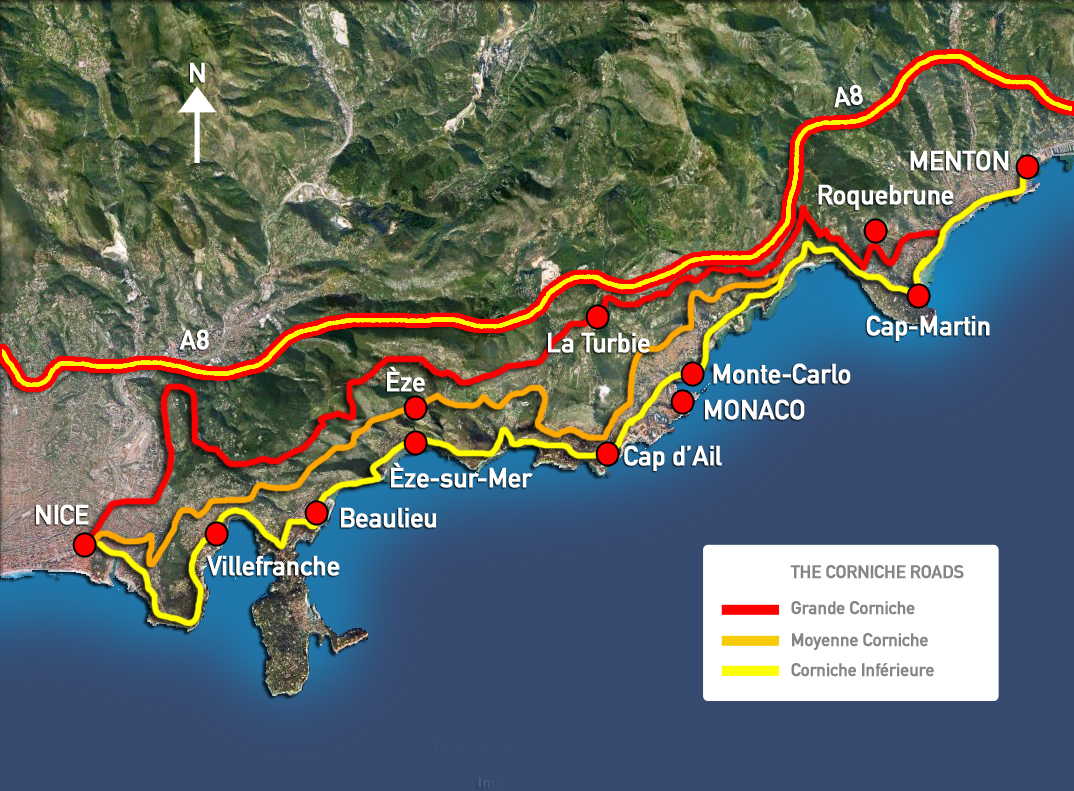
The Grande Corniche is the road that offers the most beautiful views. Built by Napoleon Bonaparte, it culminates at 450 metres. The road allows you to discover breathtaking panoramas, including the Principality of Monaco.
The Moyenne Corniche offers beautiful views of the shoreline. Wide and drawn on the side of the mountain, it passes through the perched village of Eze.
The Corniche Inférieure is the work of a prince of Monaco (18th century). It follows the contours of the coastline at the foot of the slopes. The road serves all the resorts on the coast (Villefranche, Beaulieu and Monaco).
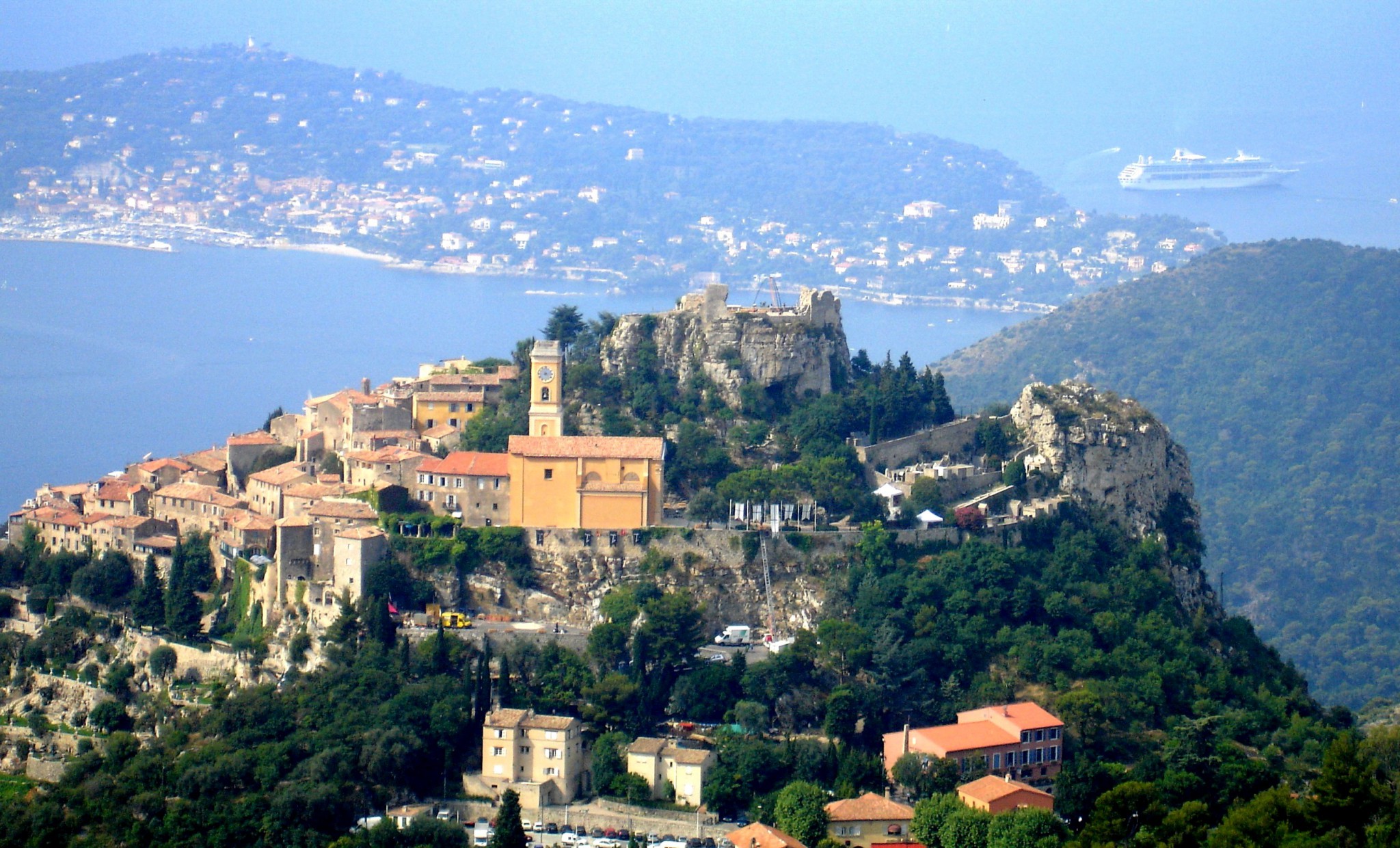
Find out more about the Corniche roads of the Riviera on the blog.
9. The Principality of Monaco
Here is a micro-state that has become famous! The Principality of Monaco covers a tiny area (202 ha) and has a population of 38,100. The territory is largely urbanised and includes the Rock of Monaco (the old town), Monte Carlo (the new town), La Condamine (the port area), and Fontvieille.

The site of Monaco is set in a beautiful mountainous environment. It is not surprising to learn that the Principality receives several million visitors each year. They come to visit the Monte-Carlo casino, the oceanographic museum and the Prince’s palace.
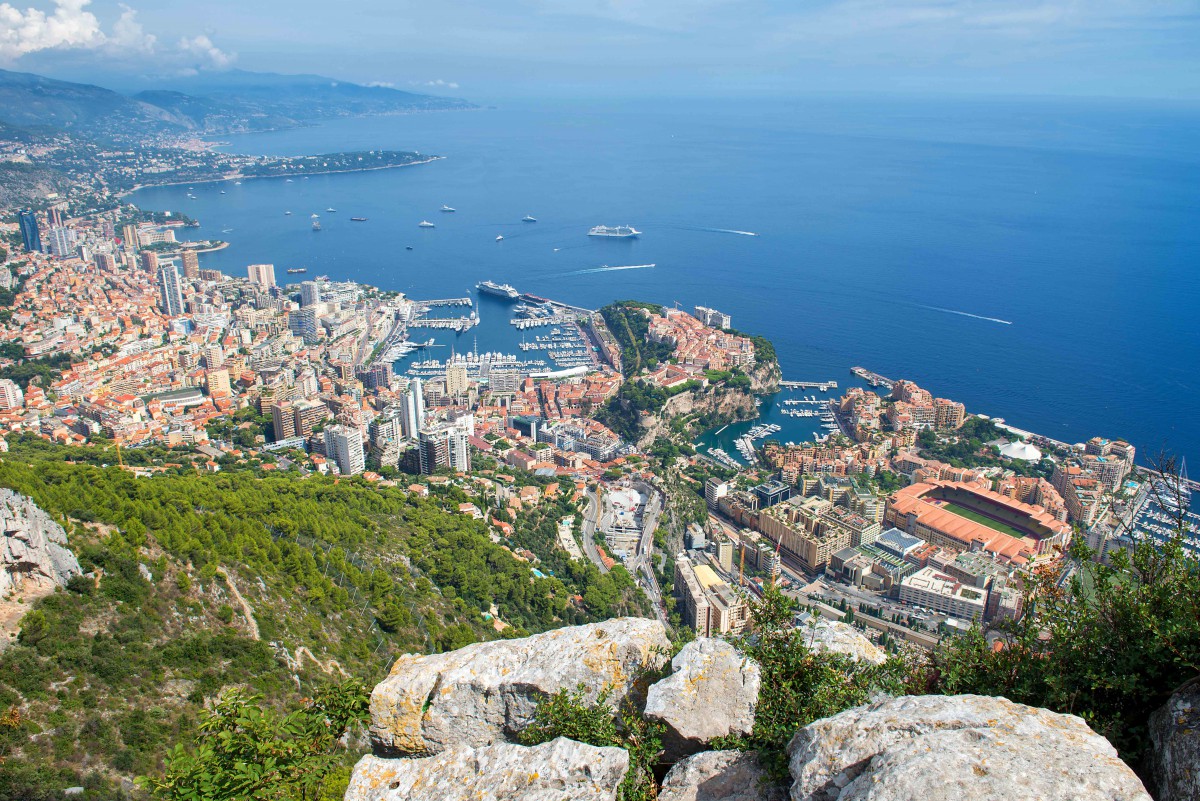
Find out more about the Principality of Monaco on the blog.
10. Menton
On the border with Italy, Menton is considered the hottest resort on the French Riviera. The small town is a pleasant winter resort that attracted the European aristocracy in the 19th century.
![Menton, French Riviera © Vinbaron - licence [CC BY-SA 3.0] from Wikimedia Commons](https://frenchmoments.eu/wp-content/uploads/2014/08/Menton-©-Vinbaron-licence-CC-BY-SA-3.0-from-Wikimedia-Commons1.jpg)
Menton offers tourists beautiful sandy beaches, two marinas and numerous festivities and cultural activities including the famous Lemon Festival.
The old town is very picturesque with its church of Saint-Michel, the most beautiful and largest baroque church in the region.
Find out more about Menton on the blog.
What to do on the Côte d’Azur
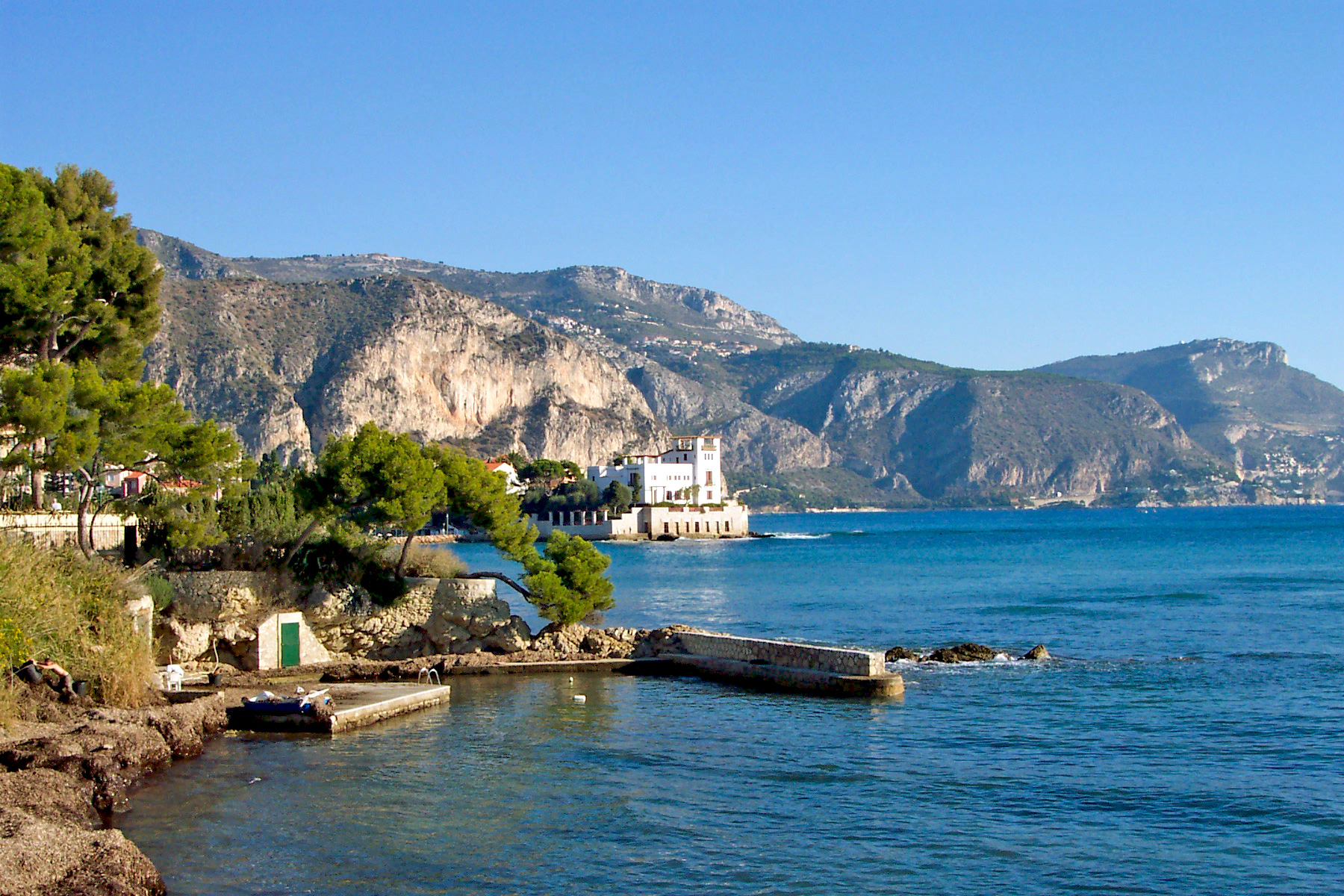
There is a multitude of activities to do on the Côte d’Azur.
You will be spoilt for choice:
- panoramic helicopter flights,
- museums in Nice and Monaco,
- guided tours of the hilltop villages,
- Ferrari/Lamborghini driving,
- jet skiing,
- cruises between Monaco and Nice,
- perfume workshops in Grasse…
Oui, the sky is the limit!
To help you get an idea, here is a list of activities proposed by GetYourGuide.
You can click on each element to find out more about what is on offer as there are much more activities to discover on the GetYourGuide website.
Learn French on the French Riviera
Learn French at the Centre International d’Antibes (CIA), a provençal farmhouse converted into a French-language school.
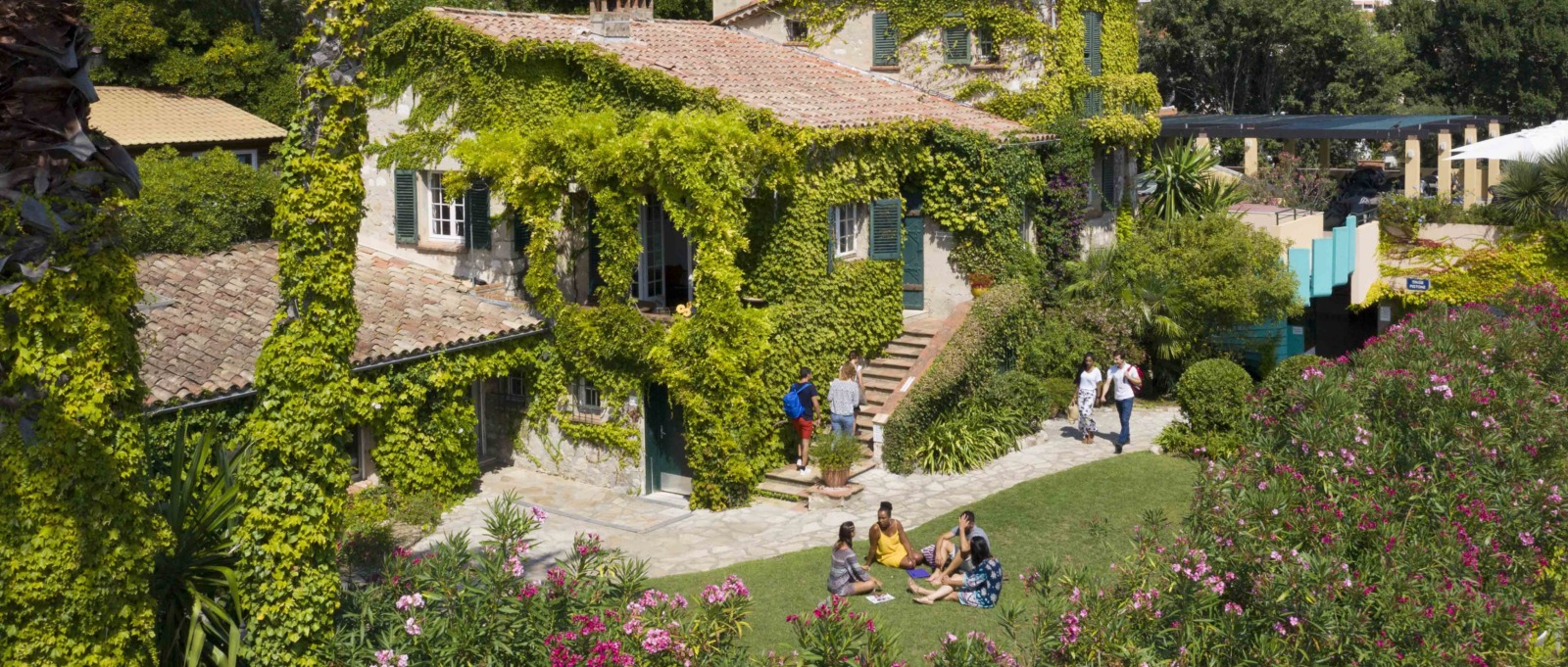
The school includes 22 classrooms, a restaurant, a Provençal garden and a panoramic view of the Mediterranean. Le Chateau is one of the schools of the CIA.
With 35 years of experience, the focus is on oral work, which is used to make students want to communicate and encourage learning. This makes the Centre International d’Antibes a great place to enrol into a full language immersion in the South of France!
Find out more about Côte d’Azur!
- Our page about Provence-Alpes-Côte d’Azur
- All there is to know about the Principality of Monaco
- Discover the sea resort of Menton
- Follow the Corniche Roads of the Riviera from Nice to Menton
- The Wikipedia article on the French Riviera
- The Tourist Office Board of Provence-Alpes-Côte d’Azur
Have you been to the French Riviera? If so, what is your favourite place? Leave me a comment just below!
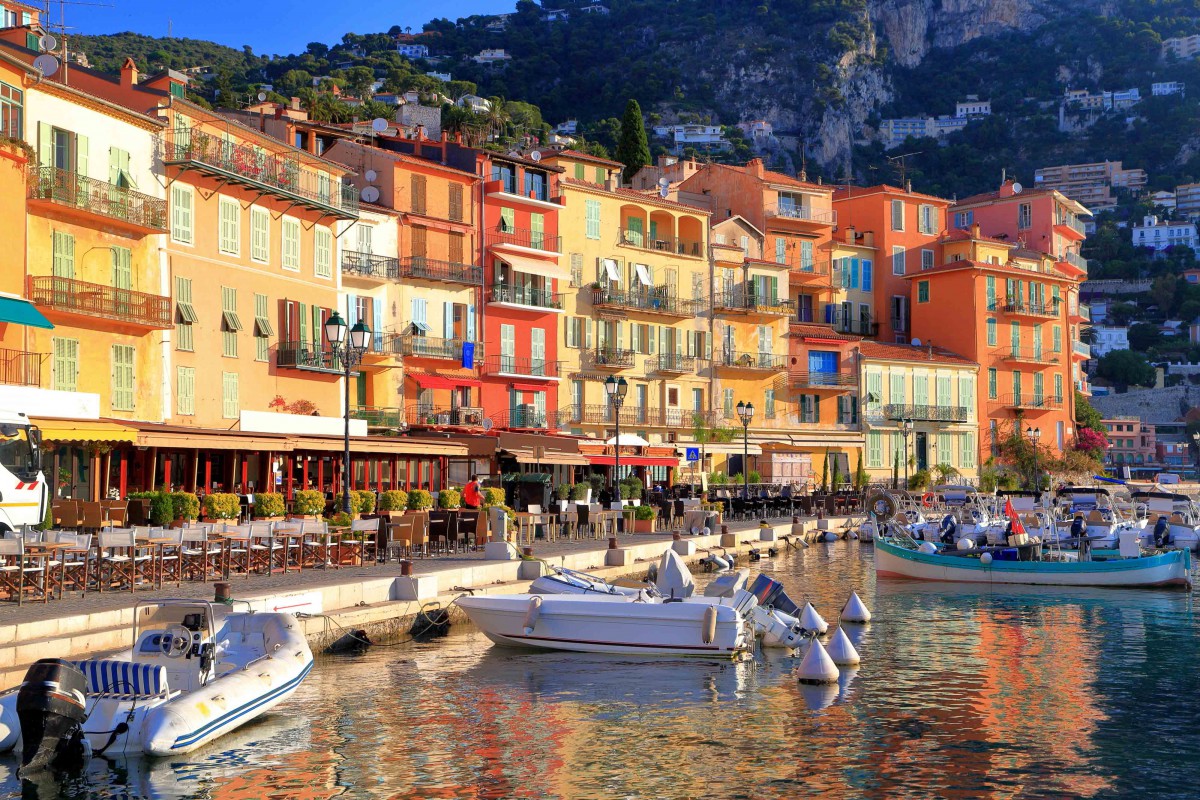




Thank you for this very detailed article Pierre 🙂 Even as a French person I learnt something… I did not know the origin of “Côte d’Azur” and that it was quite recent!
You’re welcome Bérénice! Thank you for your comment. A bientôt! 👋
Good evening Pierre, My name is Bermang from Nicaragua but with residence in USA, thank you for your articles, very soon I will be visiting France.
You’re welcome Bermang! 🙂